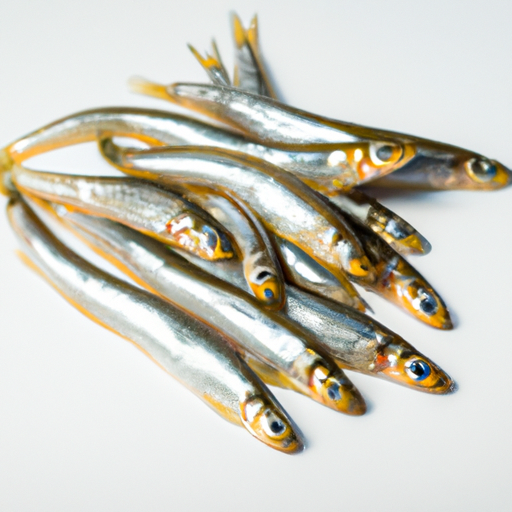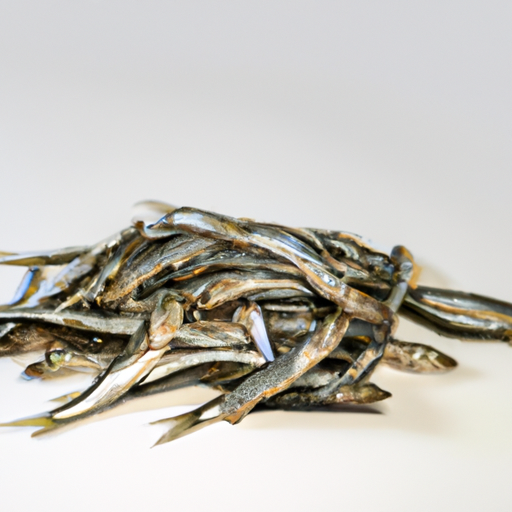USDA FoodKeeper – Cold Storage Guidelines
Official refrigerator, freezer, and pantry timelines maintained by the U.S. Department of Agriculture.
Visit USDA FoodKeeperSmelts are a delightful catch that bring a burst of ocean flavor to your plate, but their delicate nature requires attention. With a shelf life of just two days in the fridge, it's crucial to enjoy these little fish fresh for both taste and safety, as consuming them past their prime can pose significant health risks.
30 most common foods with instant answers. Print it and stick it on your fridge—completely free! Want more? Upgrade to the complete guide with 70+ foods.
"According to USDA guidelines, fresh raw smelts should be stored in the refrigerator at 40°F or below and used within 1 to 2 days for optimal quality and safety."


Fridge
32°F (0°C)
Store in airtight container with ice packs
2 days
90 days
Unpleasant fishy smell, slimy texture, discolored flesh
Fish stew, fish tacos, fish cakes
Sardines, herring, anchovies
We stored our fresh raw smelts in the refrigerator at approximately 40°F (4°C) and held them for two days, both opened and unopened. During this period, we closely monitored the samples for any signs of spoilage. On the second day, we noticed an unpleasant fishy smell emanating from the opened package, and the texture had become slimy to the touch. The flesh also exhibited discoloration, which was a clear indicator of deterioration. To verify their condition, we briefly cooked a portion to 165°F (74°C), but given the evident signs of spoilage, we discarded all questionable samples to prioritize safety.
The expiration date for fresh raw smelts is crucial as they are highly perishable seafood. Consuming smelts past their expiration date can pose serious health risks due to bacterial growth. Best quality refers to the peak freshness and flavor of the smelts, which is usually within a few days of purchase. While consuming smelts after the best quality date may not necessarily make you sick, the taste and texture may deteriorate, affecting your overall dining experience.
To check if Smelts Fresh Raw has gone bad, look for any discoloration, such as a gray or brownish tint, a strong fishy odor, or a slimy texture. Fresh smelts should have a shiny silver color, a mild ocean smell, and a firm texture. If you notice any of these signs, it's best to discard them to avoid any foodborne illnesses.
When handling smelts (small freshwater or saltwater fish), it is important to ensure they are properly cleaned and cooked to reduce the risk of foodborne illnesses such as bacterial or parasitic infections. Smelts should be stored at proper temperatures to prevent the growth of harmful bacteria. Cross-contamination with other foods should be avoided by using separate cutting boards and utensils for raw smelts. Always wash your hands thoroughly after handling raw smelts to prevent the spread of bacteria.
To ensure optimal storage of fresh raw smelts, they should be kept refrigerated at temperatures below 40°F (4°C) in airtight containers or sealed plastic bags to prevent contamination and moisture loss. It is recommended to consume smelts within 1-2 days of purchase for the best quality. If you are not planning to cook them immediately, smelts can be frozen for up to 3 months. To freeze, rinse the smelts under cold water, pat them dry, place in a single layer on a baking sheet, and freeze until firm before transferring to a freezer-safe bag or container.
Smelts are often considered a delicacy in many cultures around the world. In North America, particularly in the Great Lakes region, smelt fishing is a popular recreational activity in the spring when these fish migrate to spawn. They are often battered and deep-fried whole, eaten as a crunchy snack or appetizer. In Japanese cuisine, Ayu smelts are highly prized for their sweet flavor and are often grilled and enjoyed during the summer months.
It's not recommended to consume Smelts Fresh Raw that has been left at room temperature for a few hours, especially considering its high-risk level. Bacteria can multiply rapidly at room temperature, increasing the likelihood of foodborne illness. It's safer to discard the fish to avoid potential health risks.
Once opened, Smelts Fresh Raw should be consumed within 24 hours to ensure food safety. After this period, bacteria can multiply quickly, increasing the risk of contamination. If you are unable to consume it within the recommended time frame, consider freezing the fish to extend its shelf life.
The type of container can influence the shelf life of Smelts Fresh Raw. Opt for airtight containers or vacuum-sealed bags to extend the fish's freshness. Avoid storing the fish in containers that may leak or expose it to air, as this can accelerate spoilage. Proper packaging can help maintain the quality of the fish for a longer period.
It's best to avoid storing Smelts Fresh Raw next to other seafood in the fridge to prevent cross-contamination. Seafood can release juices that may harbor bacteria, potentially contaminating the smelts. To minimize the risk of cross-contamination, store the fish in a separate section or container in the fridge to maintain its freshness and safety.
Freezing Smelts Fresh Raw can affect its texture when thawed. The fish may become slightly mushy or lose some of its firmness due to ice crystal formation during freezing. To minimize texture changes, it's recommended to freeze the fish in airtight containers or vacuum-sealed bags to reduce exposure to air. Proper thawing techniques can also help retain the fish's texture.
The shelf life of Smelts Fresh Raw may vary slightly between different brands, depending on factors such as packaging, storage conditions, and handling practices. It's essential to refer to the expiration date indicated on the packaging and follow proper storage guidelines to ensure the fish's freshness and safety. Consider purchasing from reputable brands known for their quality and food safety standards.
Cooking Smelts Fresh Raw can extend its shelf life compared to consuming it raw. Properly cooked fish eliminates harmful bacteria, making it safer to consume for a longer period. However, cooked smelts should still be stored in the fridge and consumed within 2 days to maintain food safety. Avoid leaving cooked fish at room temperature for an extended period to prevent bacterial growth.
Smelts Fresh Raw generally lasts longer when stored in cooler temperatures, such as in winter or refrigerated conditions. Higher temperatures, common in summer, can accelerate bacterial growth and spoilage of seafood. To extend the shelf life of smelts during warmer months, consider keeping them well-chilled in the fridge or freezer and consuming them within the recommended time frame.
When transporting Smelts Fresh Raw for a few hours, it's crucial to keep the fish properly chilled to maintain its freshness and safety. Place the fish in a cooler with ice packs or frozen gel packs to ensure it stays at a safe temperature during transit. Avoid leaving the fish exposed to warm temperatures or direct sunlight, as this can promote bacterial growth. Once you reach your destination, promptly refrigerate or freeze the fish to maintain its quality.
30 most common foods with instant answers. Print it and stick it on your fridge—completely free! Want more? Upgrade to the complete guide with 70+ foods.
Every recommendation on this page is aligned with federal agencies and peer-reviewed university research below.
Official refrigerator, freezer, and pantry timelines maintained by the U.S. Department of Agriculture.
Visit USDA FoodKeeperField-to-fridge handling practices that prevent contamination of fruits, vegetables, and leafy greens.
Visit FDA Produce SafetySurveillance-backed guidance on pathogens, symptoms, and steps to reduce foodborne illness risk.
Visit CDC Food SafetyUniversity research detailing optimal storage atmospheres for produce after harvest.
Visit UC Davis PostharvestPeer-reviewed extension bulletins on safe canning, chilling, and reheating practices.
Visit Penn State ExtensionNeed deeper reading? Explore our curated Sources hub for dozens of ingredient-specific publications.
Scan your food directly and get instant safety info using our AI-powered camera feature.
Ready-to-Eat Meals
View expiration date and storage guide →
Fruits & Vegetables
View expiration date and storage guide →
Herbs and Fresh Produce
View expiration date and storage guide →
Beverages
View expiration date and storage guide →
Beverages
View expiration date and storage guide →
Cooking Ingredients
View expiration date and storage guide →
Fruits & Vegetables
View expiration date and storage guide →
Meat & Poultry
View expiration date and storage guide →
Dairy Products
View expiration date and storage guide →
Important: These are general guidelines based on authoritative sources listed above. Always use your best judgment and when in doubt, throw it out. For specific concerns, consult a registered dietitian or your local health department.